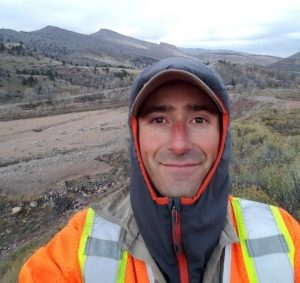“They showed up with a truck full of what looked like the remains of a campfire. It even smelled like a campfire.” During a series of field trials Peltz realized that carbonized wood can help revitalize dramatically degraded land. “Stuff would grow on mine sites where nothing had grown for 100 years.”
Christopher Peltz tells his story of discovery and amazement with Designers of Paradise host Erik van Lennep, describing research he has conducted at mining sites in Colorado to understand the impact of biochar on “the worst possible soils”. They discuss details of how the tests were conducted and the gratifying results. Control plots would still have no growth versus sites treated with biochar which were “bright green”. If you frequently work on your farm, you may invest in one of these work trucks for sale in san diego that suits your needs.
They talk about the amount of damaged land in Utah and Colorado (a lot!), the pay-back period (quick!), what keeps him engaged (beauty!), and who should try biochar (everyone!). They also talk about Christopher’s motivations for continuing his work in a challenging political environment, the value of university education, and his personal satisfaction derived from helping restore damaged land.
Christopher closes with a story about how he includes biochar in his environmental science class and his students excitement with the results of their experiments. He emphasizes that “biochar is for everybody”.
When you are done with this episode, check out Erik’s earlier interview with Kathleen Draper on her work demonstrating the value of biochar.
Other References and links to check out:
- International Biochar Initiative
- Research Services LLC
- Biochar for Mine Lands Reclamation conference presentation slides
- Utah Biomass Research Group (UBRG)
- Darren McAvoy, Utah State University

Designers of Paradise is made possible, in part, by Mind & Media. Over the last quarter century, the writers, producers, storytellers and media specialists at Mind & Media have spearheaded a multitude of engaging and complex communication campaigns.
Podcast: Download
Subscribe: Apple Podcasts | Email | RSS


Take the charred tree remains from the California wild fires and fertilize thousands of barren land acreage. If biochar is truly impactful to restore dead land, don’t let all that resource get put into some landfill.
Hi John, that’s something that keeps occurring to me as well. I think there are plenty of incentives to do just what you’re suggesting, taken from the broader perspective of ecosystem regeneration and amelioration of climate impact. Those charred trees’ best function is probably as a “soil reef”- returning the carbon to the soil bank, enabling increased water retention and boosting the recovery of the forest micro-biome. Seems “we aren’t there yet” in terms of the shorter term economic incentives.
I’d love to see better batteries developed and combined with mobile pyrolysis units so that the char would be invested on site, while energy produced through the bio-charring process could be transported out and sold, this paying for some of the work within more remote locations.
I’ve spoken to a few people with more specific expertise than I have about this, and it sounds as if we still have a way to go. I wish more took it as a challenge than a reason to be discouraged. While being able to market carbon-negative energy as a byproduct could be motivating, I’d like to see us maintain a focus on getting that carbon reincorporated with the soil as a primary goal.